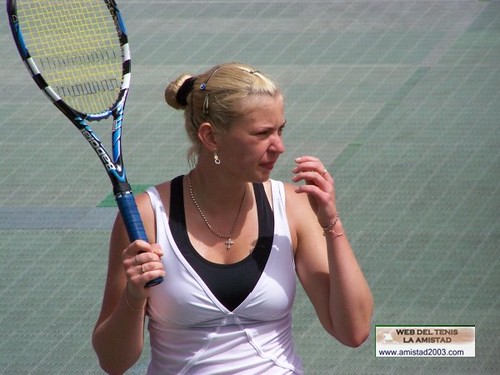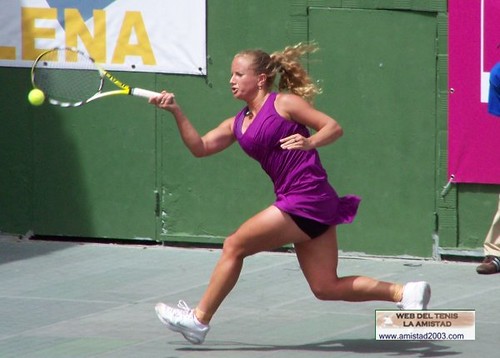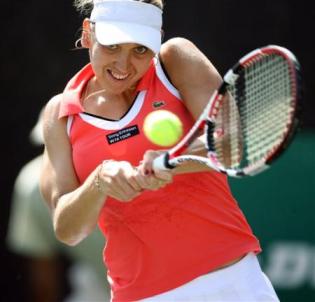Jackie Joyner-Kersee Biography
Won three gold, one silver and two bronze medals over four consecutive Olympic Games.
Jackie Joyner-Kersee Joyner-Kersee's outstanding Olympic career included six medals, three of them gold. Peter Read Miller
In every revolution -- and surely the explosion of women's sport is nothing less -- there is a leader. Whether vocal or silent, whether by purpose or happenstance, there is a figure whose shadow falls across an era and whose footprints mark the path for others to follow. In ways that could be measured, Jackie Joyner-Kersee was one of the greatest Olympic athletes in history, and in ways that could not, she was a rare combination of courage and grace, of power and vulnerability. A generation of women looked into her face and saw something they had never before seen in sport, and they were drawn to it.
"You could see that she loved everything she did and that she invested every ounce of strength she had in it," says Mia Hamm, who was 12 when Joyner-Kersee narrowly missed winning a gold medal in the heptathlon at the 1984 Olympic Games in Los Angeles. "You saw her and
you got the idea of what a woman athlete should be. At the time it seemed almost like she wasn't responsible for just her sport, but for all of women's sport."
Hamm's words ring true. Joyner-Kersee is Sports Illustrated For Women's Greatest Female Athlete of the 20th Century not just because she was one of the best performers in track and field history, but also because the energy of her athleticism and personality wrapped itself around all of women's sport at precisely the time when it began to grow.
Joyner-Kersee was one of the first children of Title IX. She was 10 years old when the groundbreaking legislation was passed in 1972, mandating equal access to sports for men and women across the country. A brilliant athlete, she also became a surrogate parent to the later offspring of Title IX, her career beginning in one era of women's sport and ending in another. "When I was little, a lot of women's sports heroes were gymnasts and figure skaters, and I just could not relate to those sports," says Julie Foudy, Hamm's U.S. soccer teammate and, like Hamm, a teenager during Joyner-Kersee's finest days. "Jackie I could relate to."
When Marion Jones, who would grow into an NCAA championship-winning basketball player at North Carolina and a two-time 100-meter world champion, was a high school junior in Southern California, she met Joyner-Kersee at a track meet. "She encouraged me, said nice things to me, and I was just overwhelmed," says Jones. "Jackie was everybody's role model." Like Hamm and Foudy, Jones later became close friends with Joyner-Kersee and was more taken with her as a person than as an athlete. "She was everything I expected and more," says Hamm. "That's saying something, because she was one of my heroes."
Joyner-Kersee's childhood was set in the dark ages of women's sport, when athletic girls spent their time racing boys and playing on their teams. The second oldest of Mary and Alfred Joyner's four children, raised in the south-end slums of East St. Louis, Ill., she was first a dancer, then a cheerleader. When she discovered track and field at age nine, she and her friends would carry sand in potato-chip bags they found in a nearby playground and spread it in front of the Joyners' porch, creating a makeshift long jump pit. There were none of the elite travel teams that nurture the athletic careers of talented girls in the '90s. There was, instead, a man named Nino Fennoy, who coached a junior track team called the East St. Louis Railers and who gave Joyner-Kersee the means to learn about herself. (It is telling of Joyner-Kersee's generation that one of the most important moments in her life came at the age of 14, when she beat her older brother, Al, in a race. "He still says he won," says Jackie, "but he didn't.")
Yet it is not for inspirational qualities alone that Joyner-Kersee stands at the top of this list, ahead of Babe Didrikson Zaharias (No. 2), Billie Jean King (No. 3), Sonja Henie (No. 4) and the inseparable tandem of Martina Navratilova and Chris Evert (Nos. 5 and 6). Joyner-Kersee's athletic résumé holds up to the harshest scrutiny.
Her silver medal in Los Angeles marked a prelude to one of the greatest Olympic careers in history, in which she would win six medals, three of them gold. Four years after L.A. she won not only the heptathlon but also the long jump in Seoul. At the '92 Barcelona Games she won another heptathlon gold and took a bronze in the long jump. In Atlanta she closed out her Olympic career with a last-jump bronze in the long jump.
Joyner-Kersee did for the heptathlon what Bruce Jenner did for the decathlon, taking an oddball mix of events and not only elevating them to great sport but also infusing them with high personal drama. In the final event of the '84 Olympic hep, the 800 meters, Joyner-Kersee needed to finish within .33 of a second of Australian Glynis Nunn to win a gold medal; she finished 2.6 seconds behind. Her heptathlon victories were operatic struggles. She won in Barcelona despite illness and debilitating heat, and at the 1993 world championships in Stuttgart, Germany, during one of the worst asthma attacks of her life. Her world record of 7,291 points in the event, set in Seoul, still stands, and Joyner-Kersee has the top six performances in history.
In 1987 she tied the world record in the long jump. It was broken a year later by Galina Chistyakova of Russia, but Joyner's 24'7" leap in 1994 remains the second-longest jump in history and would have won the 1999 world championship by an astounding 17 inches. True to her versatility, she also broke or tied American records for the sprint hurdles, both indoors and out. As a track athlete alone she presents a persuasive case for attaining the No. 1 spot on this list. But she was not just a track athlete. She was also an All-Pac-10 basketball player at UCLA. In 1996, at the age of 34 and long past her basketball prime, she played briefly for the Richmond Rage of the American Basketball League.
Yet merely reciting achievements sanitizes her greatness. It was in her last moments as an athlete that she best showed herself. After withdrawing tearfully from the heptathlon at the Atlanta Olympics and being walked off the track by her husband and coach, Bob Kersee, Jackie returned six days later to compete in the long jump. Stuck in sixth place among eight jumpers and reduced to a pale imitation of herself by the same injured right thigh that forced her out of the heptathlon, Joyner-Kersee faced her final jump. "This is it, Jackie," she told herself before sprinting down the runway. "This isn't the way you wanted it to be, but this is your last shot." Grimacing with every stride ("I never thought there was any shame in making faces, even when I was a little girl," she says), Joyner-Kersee reached into her past and popped a jump of 22'11 3/4", good for a bronze medal by one inch.
Two years later she dragged her tired body to Uniondale, N.Y., for the Goodwill Games, in which she would compete in her final heptathlon. Against all reason, in bludgeoning heat and humidity and on minimal training, she ran a 2:17.61 for the closing 800 meters, good for a 23-point victory over DeDee Nathan, her heir to American heptathlon supremacy. At the finish she fell into her husband's arms and wept. "I can't believe it's over," she said that night. "I can't believe the time went by so quickly."
Time has not slowed since. On a recent fall afternoon she rode in a limousine, scooting from a photo shoot in Kansas City to catch a flight home to St. Louis, where she could resume operations in her many business ventures, including Elite Sports Marketing (athlete representation and management), Gold Medal Rehab (sports medicine), the Jackie Joyner-Kersee Youth Foundation and her sponsorship of a NASCAR team. "I'm retired, and I've never been busier," she says. "I thought I'd be chillin'." Even postcareer she is blazing a trail.
Earlier that day she had posed for the picture that appears on the cover of this magazine with members of the U.S. women's soccer team, her successors in the public eye. At the end of the photo session, as the soccer players put on their team sweats, Joyner-Kersee pulled a yellow fleece top over her taut upper body, paused and then cartwheeled gracefully across the room. The soccer players, celebrities themselves, shrieked like schoolgirls. Joyner stood tall and laughed until she shook. If you looked closely, you could almost see the cord that connected them.
Jackie Joyner-Kersee
Jackie Joyner-Kersee
Jackie Joyner-Kersee
Jackie Joyner-Kersee
Jackie Joyner-Kersee 














































